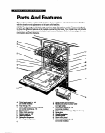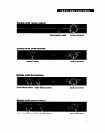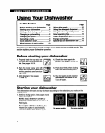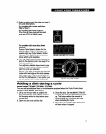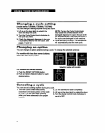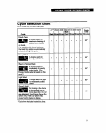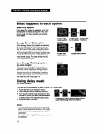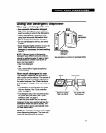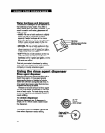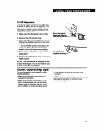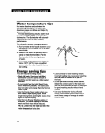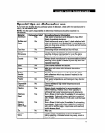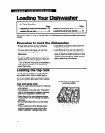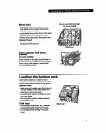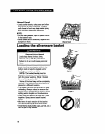
Water hardness and detergent
The amount of detergent to use depends on
the hardness of your water. If too little is
used, dishes won’t be clean. However, if too
much is used in soft water, glassware will
begin to etch.
l HARD-Fill one or both sections to slightly
below the top of the section (3 table-
spoons) if water hardness is 8 or more
grains per gallon, or 136 or more parts per
million. Leave enough space in the cov-
ered section to allow cover to close.
l MEDIUM-Fill one or both sections to the
top of the second step (2 tablespoons) if
water hardness is 5 to 7 grains per gallon,
or 85 to 119 parts per million.
l SOFT-Fill one or both sections to the top
of the first step (1 tablespoon) if water
hardness is 0 to 4 grains per gallon, or 0 to
68 parts per million.
Find out your water’s hardness by asking
your local water department, water softener
company or county extension agent.
Using the rinse agent dispenser
Rinse agent dispenser
Keep the rinse agent dispenser filled with a
liquid rinse agent. A rinse agent greatly
improves the drying of dishes by helping
water flow off them during the last rinse. A
rinse agent also keeps water from forming
droplets and drying as spots.
Release of a small amount of rinse agent
into the rinse water is automatic in the final
rinse of each cycle. For best drying results,
check the dispenser periodically to see if it
needs refilling.
To check dispenser
Remove dispenser cap. If dispenser is
empty, an “E” will be clearly visible inside
the dispenser.
The center of the Fill Indicator Cap will be
clear when dispenser needs refilling.
An “E”
shows
when empty
Center
will
be
clear when
empty
12



